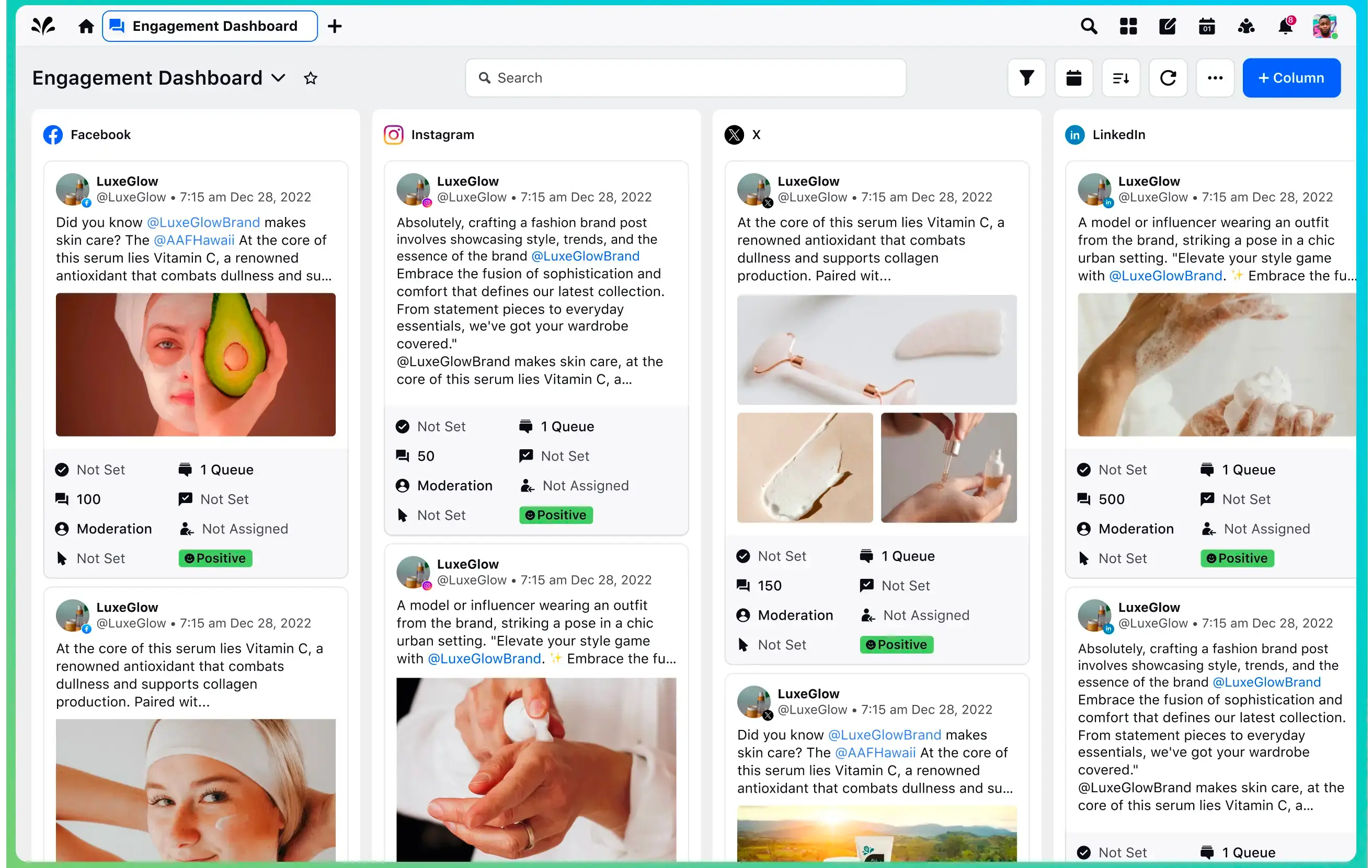The undisputed leader in social media management
For over a decade, the world’s largest enterprises have trusted Sprinklr Social for its in-depth listening, unmatched channel coverage, enterprise-grade configurability and industry-defining AI.

3 key takeaways: how to use social commerce to drive retail sales
By now, you’ve probably noticed the “View Shop” button at the top of a brand’s Instagram and the “Shop Now” button on a Facebook post. If you click those buttons, you’re directed to an online storefront where you can buy items like beauty products, clothing, jewelry, and other goods directly through the social media platform — not to the brand’s website like the increasingly archaic and clunky experience you’re used to. Whether it’s on Instagram, Facebook, TikTok, Pinterest, or, more recently, Twitter, you’re experiencing the rise of social e-commerce (also known as social commerce).
This frictionless shopping experience has exploded in recent years and projections are that this segment of e-commerce will only continue to grow. 2021 brought in $492 billion worth of social commerce sales, and experts are forecasting a $1.2 trillion opportunity by 2025.
Social e-commerce is evolving so quickly that it can be difficult for brands to get it right. That’s why Pabel Martin, Sprinklr’s resident social commerce expert and principal solutions specialist for Sprinklr Social, sat down with digital transformation experts Sloan Broderick and Rob Harles from Accenture Interactive, to discuss how brands can use social e-commerce to grow their business. Here are three key takeaways from the webinar, “How to Use Social Commerce to Drive Retail Sales,” hosted by the American Marketing Association.
Watch the webinar: how to use social commerce to drive retail sales
1. Consumers want social commerce, even if it’s not perfect
One of the main insights from this discussion was repeated multiple times: consumers want social commerce, even if it’s not perfect. Martin, Broderick, and Harles all agreed that customers want brands to do the basics of social commerce really well — and that they don’t care if the rest is perfect. At least, not yet.
The table stakes of implementing a social strategy, according to Broderick, should be defined by traditional sales principles: do I have something someone wants? How can I make it easy for customers to find my brand and purchase my products? He stressed that if you can answer these questions, you’ll be able to provide your customers with what they need through a social e-commerce experience.
The three experts also discussed the top 10 features for social commerce, including easy returns and refunds, clear descriptions and images, and loyalty rewards. When you get the basics of social commerce right, you can ensure that consumers’ expectations for a convenient, simple, and trusted commerce experience are met.
Rob Harles suggested brands take on the perspective, “We know we don't have everything but we care about you, so we're going to do what's right for you. And… if you can do that and bottle that — and in this day and age I think we actually have the opportunity to do it — that's going to separate the weak from the strong in terms of who's going to grow and who’s not.”
2. Take the time to understand who you’re interacting with
In order to create the most frictionless, optimized experience for your customers, the most important thing you can do is to build trust. Hopefully, you’re already doing that through other vehicles, but the presenters emphasized that trust can be eroded very quickly when a customer has a bad experience with a brand. To build trust, spend time understanding the communities you’re interacting with. It’s likely that you’ll be interacting with three different types of shoppers: immature shoppers who do little-to-no social commerce shopping, evolving shoppers who occasionally shop on social media, and mature shoppers who frequently use social media for e-commerce.
Source: Accenture Interactive, How to Use Social Commerce to Drive Retail Sales
When you begin to understand the motivations (and hesitations) behind each of these three groups, you can build trust by giving them what they truly need from a social commerce experience. Watch the webinar for more details about each of the groups and how brands can use this information to their advantage.
3. Don’t be afraid to experiment
As mentioned earlier, you don’t have to have the perfect social commerce experience right off the bat. The three presenters underscored the importance of learning as you go. Once you have the basics down, you’ll learn much faster by setting out to prove or disprove your hypotheses about customer preferences, intent, and engagement. Get bold by experimenting with shoppable ads, influencer posts and shares, or videos. Be creative in your efforts. Creativity wins, according to Broderick.
You’re there to make shopping a more frictionless, fluid experience for your customers. So why not take inspiration from them? They’re your best insight into what’s going to happen next on the ever-evolving social commerce landscape.
The three social commerce experts reminded us: the brands that are going to win are the ones that are the first and fastest to break down silos. In order to deliver great experiences, brands need to unify the customer experience.
Learn more about how to optimize your social commerce experience using Sprinklr’s Conversational Commerce feature.

